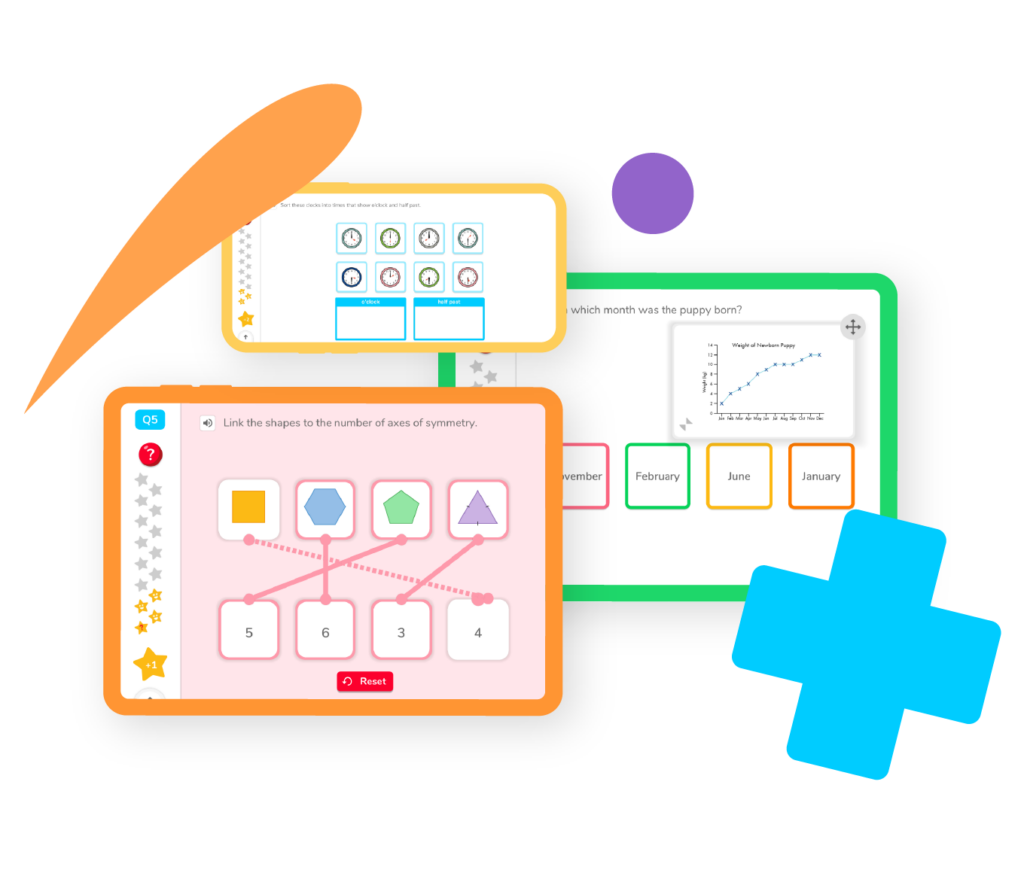Practice important Year 2 maths skills with Doodle: addition, subtraction, measurement, shapes, fractions and more! Follow along with classroom activities or use them to help scaffold work and support learners of all abilities.

In addition to practising what they have learned in Year 1, Year 2 students will learn:
Your learners will delve a little deeper into the topic of geometry in Year 2 maths, covering shapes, position, and direction. They’ll be taught how to:
In Year 2, learners will cover many aspects of measuring, time, and money. By the end of the year, they’ll know how to:
Year 2 maths is when children will be introduced to statistics. They’ll be taught how to:
There are no formal maths assessments in Year 2. Instead, class teachers will monitor students’ progress using a range of informal assessment strategies throughout the year.

Try DoodleMaths for free!
See how DoodleMaths can support your Year 2 child with maths by creating your account today.

We’ve gone through the national maths curriculum and pulled all the skills your child needs to become a confident and resilient pro at Year 2 maths!
Whether you’re stepping into the world of Year 2 maths for the first time or you’re a seasoned pro, we’ve got you covered! Say goodbye to the guesswork and hello to confidence with our engaging Year 2 maths guides.
Dive into our blogs and discover how easy and fun supporting your child’s learning journey can be!
Year 2 maths curriculum
Know exactly what your child should master in maths before they get to Year 3.
Year 2 maths problems
Shapes, counting & more! Try these 50 Year 2 maths questions at home.
Year 2 maths activities
Discover fun, hands-on Year 2 maths activities to support success at home or in school.
Click on a year group below to start exploring tailored resources and support.
By the end of Year 2, students should be comfortable working with numbers up to 100 across the four operations (+, -, ÷, x). They should know their 2, 5 and 10 times tables and be able to work with simple fractions.
They should be able to tell the time to the nearest 5-minute interval, describe 2D and 3D shapes by their properties, and read simple charts such as pictograms and tally charts.
As they come to the end of their Key Stage 1 journey for maths Year 2 students will be required to meet a whole host of statutory requirements before they are ready for Year 3 maths and Key Stage 2.
For a full overview of everything your child needs to know by the end of Year 2, take a look at our full Year 2 curriculum overview!
There are no maths assessments in Year 2. Class teachers will instead monitor their students’ progress using a range of informal assessment strategies throughout the year.
The best way to ensure your child gets the best out of their maths education in Year 2 is to ensure they’re getting lots of time to practise the basic (but important!) skills they’re learning!
There are lots of ways to help with maths for Year 2 students, such as practising skills like counting or doing a few simple sums on a daily basis. You could also try out these 45 Year 2 maths questions to test your learners’ skills!
Another option is the incredible DoodleLearning maths app which offers a super interactive way for your learners to get in that all-important maths practice!
Book a chat with our team
If you’d like to use Doodle’s browser version, please visit this page on a desktop.
To log in to Doodle on this device, you can do so through our apps. You can find out how to download them here: